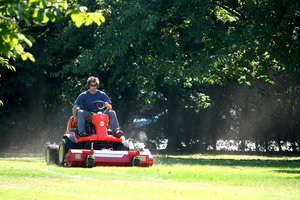Hurricane season is here and it is best for South Florida residents to be prepared. Every year, victims of hurricanes are injured or lose their lives because they miss warning signs or take unnecessary risks. As the sudden appearance of Andrea reminds us, it is best for residents throughout the region to be prepared.
Risks associated with hurricanes are high. Victims can be injured by debris, falls, electrical wires or storms, as well as drowning. To keep your family safe this season, you should review the guidelines published by the Florida Highway Safety and Motor Vehicles department. In addition to keeping motorists safe, the recommendations can help you make the best decisions for your family during a storm. Our Florida personal injury attorneys are dedicated to helping residents throughout the area with staying safe.

Unfortunately, predicting where a hurricane will strike can be difficult. Depending on where you are, the hazards you face will vary. And, often overlooked are the very real risks presented by violent afternoon thunderstorms, which are commonplace this time of year. Whether you are at home, work, school, or in your vehicle you want to be aware of the particular dangers in your area. You should also remain aware of any changes and be flexible to make a last-minute decision in the event of an emergency.
Remain alert throughout the hurricane season by listening to weather reports and keeping an eye on weather patterns for sudden storms. Winds, dark clouds, and humidity can all be signs of a brewing storm. If you do get news of an impending storm, you should take action as soon as possible to preserve your safety and that of your loved ones. Throughout the storm, you should monitor its progress and follow the instructions provided by emergency officials.
When driving in a vehicle, always be mindful of traffic conditions, road congestion, construction, lane closures, flooding and other potentially dangerous conditions that may lie ahead. Always slow down because it may be difficult to see what lies ahead in the roadway. Rain and splashing puddles can make it difficult to see in front of you and increase the risk of hydroplaning. Be cautious of high winds, especially if you are in a truck or on a motorcycle.
During a storm, you should remain extra careful, even in what may seem like familiar territory. You could come upon dangerous roadways, closed intersections, or flooding. If you see an officer directing traffic, follow his or her instructions. If a traffic light is out, treat that intersection like a 4-way stop. Most importantly, never drive through moving water, especially if you cannot see the road beneath.
If you are not already in a vehicle, you should try to stay put. Do not leave home or work unless it is absolutely necessary. If you are not already at home, you should be prepared to stay in one place, possibly for an extended period of time. Many victims of hurricanes suffer because they head out, thinking the storm is over. Keep in mind that the majority of injuries and deaths occur because of dangerous conditions after a storm, not because of the storm itself.
You should also warn your children of potential dangers, especially curious teens or older children who may try to venture out to see the remnants of the storm. Curious observers can also get in the way of emergency crews who are looking to rescue those in need. You should also update your emergency contact information for officials.
Continue reading ›

 Florida Injury Lawyer Blog
Florida Injury Lawyer Blog














